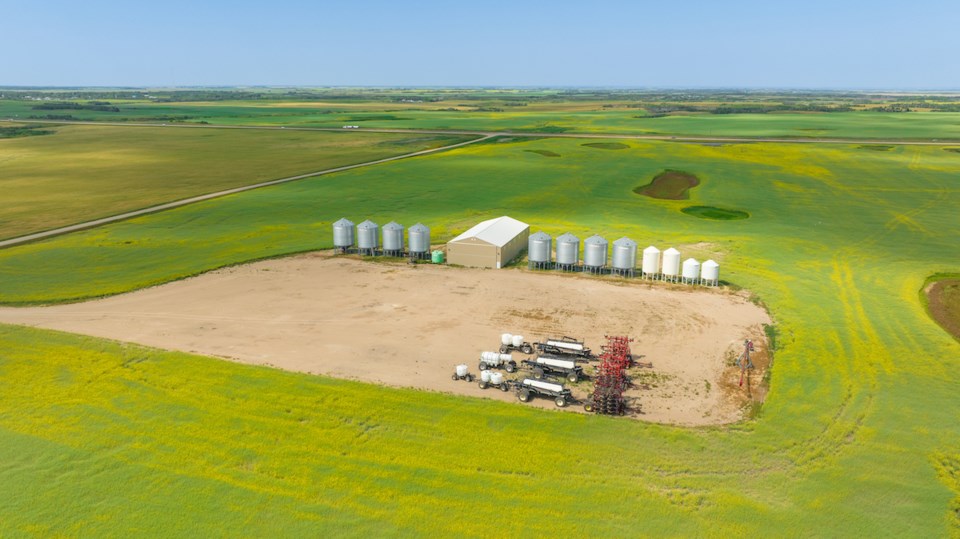A host of variables conspired to keep farmland values in check in the fist half of 2023, according to a mid-year review of activity by Farm Credit Canada.
Released Oct. 4, the report says farmland values nationally grew by an average of 7.7 per cent.
Saskatchewan led growth nationally, with values rising by an average of 11.4 per cent, on par with last year.
But other provinces saw muted growth, with values in Manitoba rising 6.4 per cent versus a 14.2 per cent increase in 2022. Alberta values rose 3 per cent while values in B.C. were flat during the first half of the year.
By contrast, Alberta say 10 per cent growth last year while B.C. values increased 8 per cent.
While a limited supply of available properties supported land values, buyers were cautious.
“Purchasing farmland is a very strategic decision for producers,” J.P. Gervais, chief economist with FCC, said in a statement accompanying the numbers. “They need to assess whether they can earn enough from the larger land base they’ve acquired and if not, whether other areas of the operation generate enough income to pay for the land.”
Gervais was not available for interviews, but the mood in the farm sector has shifted over the course of the growing season.
While strong commodity prices earlier this year buoyed farmer confidence in expansion-oriented deals, this year’s drought has cut yields and falling commodity prices mean what is harvested will fetch less.
Ukraine enjoyed a large grain and oilseed harvest despite the ongoing war, while Russia saw a bumper wheat crop that has put downward pressure on prices. Canola prices also took a tumble in September, undercutting the prices growers in Canada are likely to receive for their much smaller harvests.
Meanwhile, the effect of higher interest rates is starting to hit home, dampening demand.
“With higher interest rates, elevated farm input costs and uncertainty regarding future commodity prices, producers are being cautious with their investments and capital expenditures,” Gervais said.
Nevertheless, the recent auction of 12 parcels totalling 2,290 acres near Indian Head, Sask., pointed to good demand for prime parcels.
Handled by online auctioneer CLHbid.com, sales director Tyler Ruttan said the offering, dubbed ‘First Class,’ saw strong interest and eventually sold to a single buyer for “just shy” of $9 million.
“There’s no question that interest rates and commodity fluctuations are top of mind,” Ruttan said. “Despite that, large assemblages like First Class still garner a great deal of interest because you don’t get the opportunity to buy 2,300 acre at once in one day in a highly sought-after area.”
The pricing for First Class bears that out.
“The land brought a premium level for the area,” Ruttan said. “The land had great interest from Western Canada, from the locals and from out of province, and in the end an out-of-province buyer bought the farm in its entirety.”




